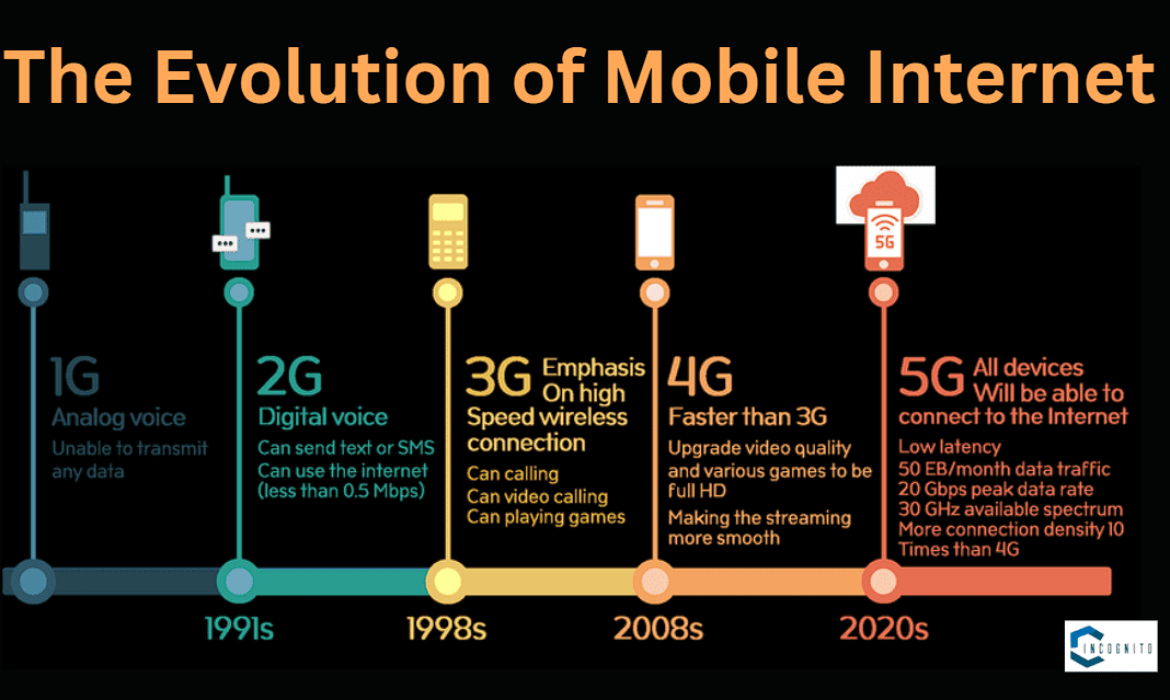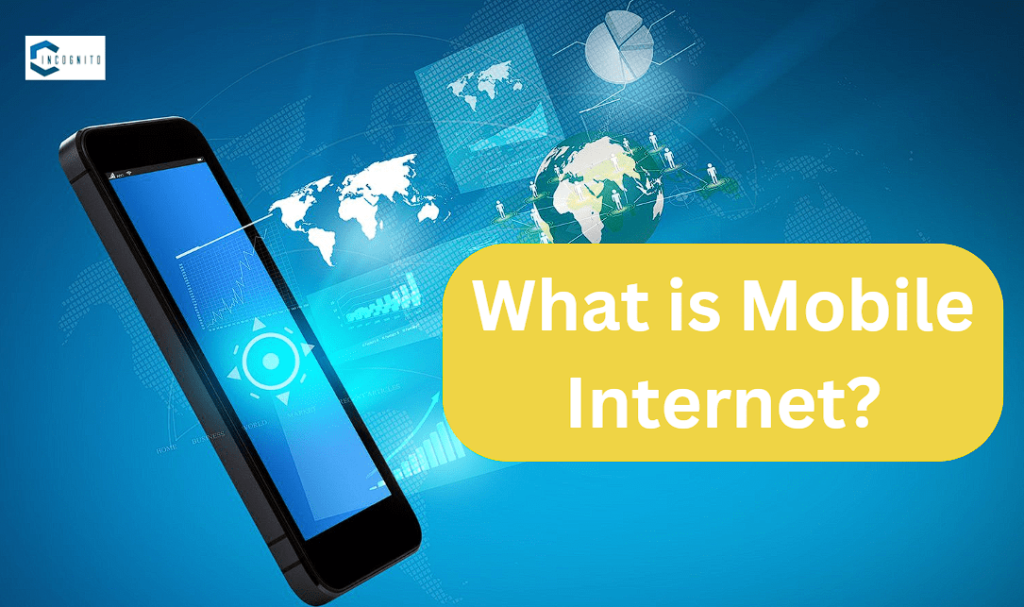
The GSM MoU Association or GSMA, the global organization that unites and represents mobile operators and other players within and adjacent to the mobile communication industry, reported in October 2023 that 54% of the global population owns a smartphone.
This corresponds to approximately 4.3 billion people who are more than likely using a mobile phone to browse the internet, access online services, and use internet-powered productivity applications and other types of mobile apps.
It’s a good indicator of mobile internet use. After all, the higher the rate of smartphone ownership, the likelier it is for people to access the internet via mobile devices.
What Is Mobile Internet?
Mobile internet refers to wireless internet access or connectivity delivered to mobile phones and other cellular devices through a mobile network. It is also known as mobile broadband or mobile data.

It’s an exceptionally useful innovation. Mobile internet enables portable internet connectivity. You don’t need to remain tethered to a local access point with a limited range (e.g., your wi-fi router at home) to continue browsing the web or use apps that require an internet connection. You can go online as long as you have an internet-capable phone and mobile broadband coverage.
This means you can work, stream videos, go on social media, or play video games wherever and whenever you want. Moreover, you can do all these not only on your mobile phone but also on any device (e.g., laptop, tablet, smartwatch) capable of utilizing mobile data from cellular networks.
Mobile internet also facilitates real-time cloud storage. With persistent internet connectivity, documents, notes, spreadsheets, presentations, calendar entries, phone logs, messages, contacts, photos, videos, and other files and information on your mobile device can be automatically backed up to cloud servers.
Modern-day mobile internet is also quite fast. 5G mobile networks deliver average speeds of 100 megabits per second (Mbps) and can transfer data at a rate of 20 gigabits per second (Gbps).
That said, high-speed internet hasn’t always been the default for mobile networks.
Mobile Communication Technology: From 1G to 5G
Mobile network operators have gone through and used different generations of mobile communication technologies. The earliest iterations of these were not capable of delivering data.
1G: First Generation
First-generation mobile communication technology, which emerged in the latter part of the 20th century (i.e., the 1980s, to be exact), transmitted voice data using analog modulation. It offered limited coverage, had low capacity, and was extremely slow—2.4 kilobits per second (Kbps)—especially compared to modern-day data transfer rates.
For all its limits, 1G was a significant wireless communications breakthrough. It allowed people to make and receive voice calls on cellular phones anywhere they had mobile network coverage.
2G: Second Generation
Over a decade later, telecommunications companies transitioned to the second-generation mobile communication technology. 2G networks applied digital modulation techniques to analog voice signals.
They incorporated transmission technologies like the global system for mobile communication (GSM), code division multiple access (CDMA), general packet radio services (GPRS), and enhanced data rates for GSM evolution (EDGE). 2G meant clearer calls and better voice quality than 1G calls as digital modulation reduced the amount of interference or static noise that could get through.
Mobile internet access first became possible with 2G – to be precise, 2.5G or EDGE. The data transfer rate multiplied more than 20 times, enabling email and basic internet access. 2G networks also allowed short message and multimedia messaging services (i.e., SMS and MMS, respectively).
3G: Third Generation
It took another decade for third-generation mobile communication technology to be developed and rolled out. Universal mobile telecommunications service (UMTS) significantly improved mobile data transfer rates — i.e., mobile internet speeds. Data upload rates range from 300 Kbps to 3 Mbps, while download speeds can be from 1.1 Mbps to 20 Mbps. Theoretically, 3G data transfer rates have an upper limit of 42 Mbps.
The relatively higher speed of 3G made video calling and other relatively more data-intensive applications possible over mobile networks. With 2G, mobile phones had only basic email and rudimentary web browsing capabilities. 3G drove and fueled the development of smartphones designed to be used heavily with the internet for multiple purposes.
4G: Fourth Generation
Fourth-generation mobile communication technology was developed after around a decade of 3G use. 4G applied multiple input and multiple-output (MIMO) technology, i.e., using multiple transmission and receiving antennas to amplify data throughput and range. It also splits information streams across adjacent narrowband subchannel frequencies instead of transmitting a single stream through one wideband channel frequency — i.e., orthogonal frequency division multiplexing (OFDMA) — to enable simultaneous transmissions.
Through these technologies 4G networks offer significantly faster data transfer rates than their 3G counterparts. 4G typical speeds are at 15 Mbps and can theoretically attain 100 Mbps.
The introduction of long-term evolution (LTE) has further boosted 4G speeds. 4G/LTE can deliver speeds of up to 150 Mbps, while 4G/LTE advanced has a theoretical upper limit of 1,000 Mbps.
4G also has a lower latency than 3G. Latency is the time it takes for data to reach its destination from when the transfer was initiated. The latency of 4G networks typically ranges between 30 and 70 milliseconds.
The LTE iteration of 4G has an even lower latency at 15 to 50 ms. At these levels, mobile internet on 4G networks is more than sufficient for video gaming and other applications that require real-time feedback, such as virtual reality, augmented reality, and autonomous vehicles.
5G: Fifth Generation
Fifth-generation mobile communication offers the highest speed, lowest latency, and biggest capacity among all generations.
The average data transfer rate is 100 Mbps, but 5G is capable of delivering speeds of up to 20 Gbps. Theoretically, you can download a full-length movie in 10 seconds on a 5G network.
5G can have a latency as low as 1 ms. It can give seamless, real-time responses with no lags.
5G networks, moreover, have 100 times more traffic capacity than 4G networks. This means less network congestion and, thus, more reliable and better service.
Mobile Internet: Better and Faster
Mobile internet is internet connectivity delivered via cellular networks. It liberates you from the need to be close to a wi-fi router.
However, it has taken at least three generations of mobile communication technology for mobile internet to become more usable, and at least four generations before it developed into the mainstream service you enjoy today.



